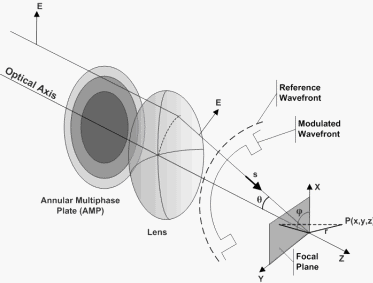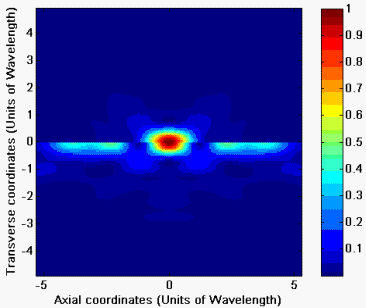Point-Spread-Function Engineering
Performance can be improved in many optical applications by engineering the focused three-dimensional (3D) intensity distribution, or point-spread-function (PSF), using diffractive optical elements (DOEs). DOEs are passive optical components that are positioned in the pupil plane of an optical system to alter the amplitude, phase, and polarization of the light prior to focusing. Annular multi-phase plates (AMPs) are a special class of phase-only DOE that are particularly useful for PSF-engineering because they transmit all of incident optical power altering only the phase of the wavefront.

The resolution achieved in scanned-laser imaging techniques, such as confocal and multi-photon microscopy, is determined by the transverse and axial extent of the central (most intense) lobe of the diffraction-limited PSF. AMP designs have been reported that can decrease the lateral or axial extent of the central lobe, and this is frequently referred to as super-resolving. In other applications it is beneficial to elongate the PSF axially so the focused intensity remains peaked over a greater depth of field.

The NPM group is developing new algorithms for designing DOEs that fully account for the vector character of the field. These methods can be used to back-engineer a DOE based on a set of target PSF criteria achievable under high-numerical-aperture focusing. The resulting DOEs can be used to improve the resolution achievable in multi-photon imaging and multi-photon 3D microfabrication. Click on the publication below to find out more about our work in this area.
“Vector diffraction analysis of high numerical aperture focused beams modified by two- and three-zone annular multi-phase plates.”
T. G. Jabbour and S. M. Kuebler Opt. Express, 14, 1033-1043 (2006)